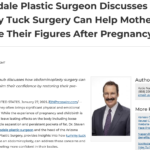
You have had your gender affirming mastectomy, something that you had been looking forward to pursuing for such a long time. Since then, your life has been quite positively transformed. The heavy burden from your gender dysphoria has been lifted and largely, if not totally, removed. The same is true of the associated stress and anxiety that you have had to deal with for so many.
You are happier and more optimistic.
There may be one question that has crossed your mind regarding your top surgery and long term considerations. This is whether or not you should have any concern about the possibility of getting breast cancer in the future. Some questions related to this are:
• Do I still have a risk for developing breast cancer despite my top surgery?
• If so, what is it?
• I am on testosterone – does this impact my risk, either positively or negatively?
• I am not on testosterone – should I be in order to reduce my risk of developing breast cancer?
• Will a family history of breast cancer in women (and men) affect my risk even after top surgery?
So, what are the answers to these and similar questions?
Unfortunately, we do not yet have significant, evidenced based answers regarding the risks of developing breast cancer in individuals who have had top surgery. In addition, we do not have definitive recommendations related to the need for future evaluations and screenings or for the methods to facilitate it. In other words, as of yet, we don’t know what future risks are or how to screen for and detect a breast cancer. In addition, there are several variables that can affect this risk.
This is probably not the answer that you were hoping for. Unfortunately, this represents the present state of the information. In time, though, we should have some more definitive answers, probabilities and recommendations due to far more data being generated and collected as a result of many more individuals undergoing this procedure.
There are isolated reports of individuals who did develop breast cancer subsequent to their top surgery. However, at this point in time, this appears to be a relatively rare occurrence. Interestingly, breast cancer has been detected in the tissue removed in a very small fraction of individuals undergoing this procedure.
It is important to understand that top surgery is a mastectomy – the removal of the breast. However, it is a gender affirming mastectomy performed specifically as an effective treatment for gender dysphoria. Its purpose is to provide for a more masculine appearing chest or, in some situations, a non-female appearing chest. It is not intended to prevent breast cancer. With this approach, variable amounts of breast tissue are left – and for a reason.
The results MUST be aesthetically pleasing and appropriate.
This differs from mastectomies performed for the treatment of breast cancers and pre-malignancies. In these situations, most all of the breast tissue is removed in order to minimize the risk developing future breast cancers. This leaves thinner tissues and a substantial tissue deformities which impacts the long term appearance. Aesthetics will be more compromised in these situations.
You don’t want these types of results for your gender affirming top surgery!
A very significant variable in top surgery is the amount of residual breast tissue remaining following the procedure. This depends on the techniques employed (double incision free nipple graft, keyhole, concentric circle, pedicle, etc.), the plastic surgeon performing the surgery and even the particular patient with their unique characteristics and variables. The extent of the residual tissue can impact an individual’s risk.
The bottom line is that a transmasculine individual still has a risk of developing breast cancer after top surgery.
The effects of testosterone on future risks of developing breast cancer are unclear at best. There are reports that suggest that there may be a lower incidence of this in those transmasculine individuals who are taking testosterone. However, there is some conflicting data on this so this possible relationship should not be taken as gospel.
With regard to monitoring and screening, mammograms (or “manograms”) are technically not possible and informationally useless after top surgery. Digital ultrasounds and MRIs are alternatives but their usefulness and appropriateness must be explored further. In addition, MRIs can be cost prohibitive especially when not covered by insurance.
Presently, the best approaches for the detection of a possible breast cancer following top surgery are self-examination and clinical examination by a qualified physician. This may change or be modified in the future with further study and information.
Steven H. Turkeltaub, M.D. P.C.
Scottsdale and Phoenix, Arizona





